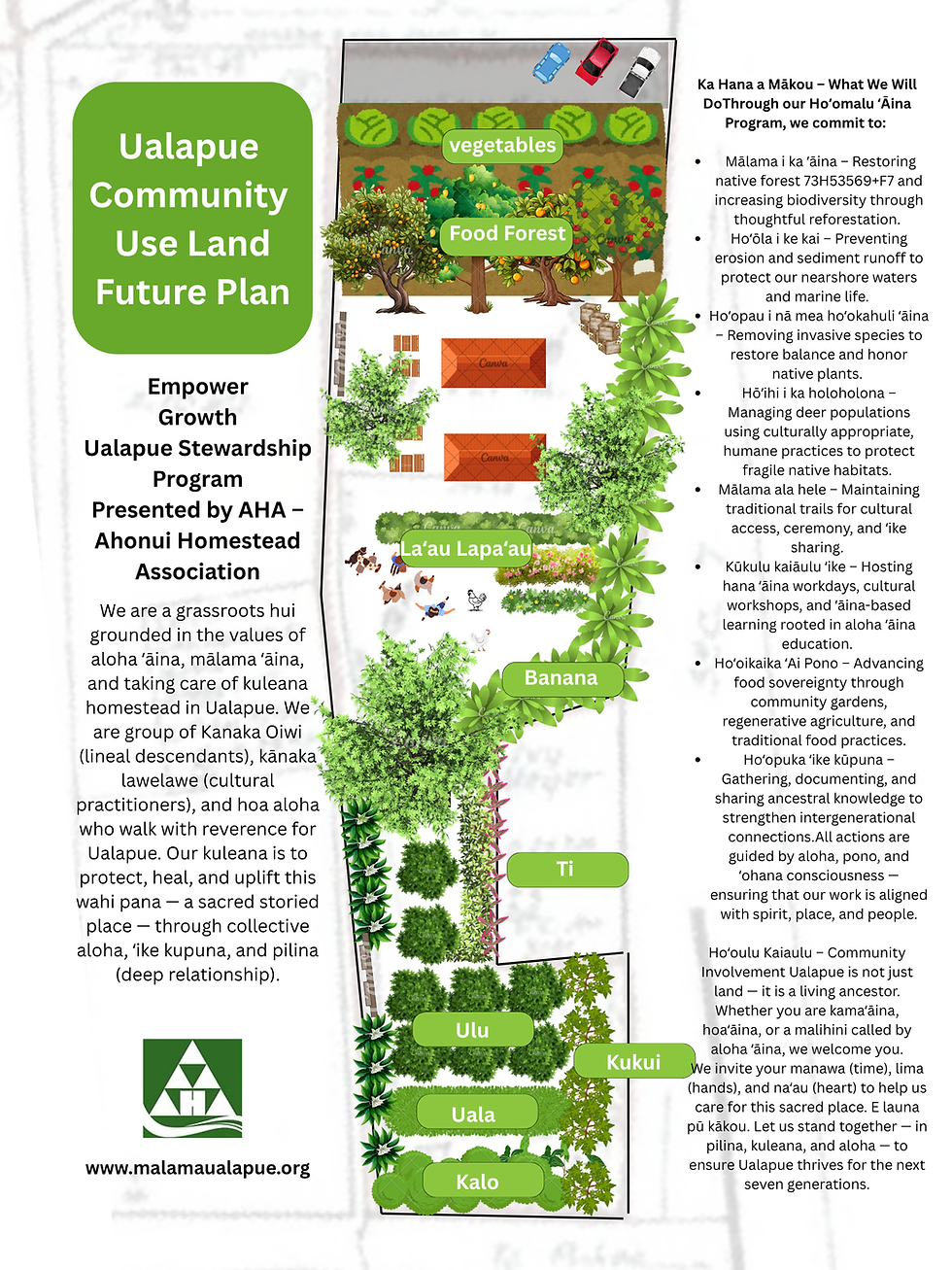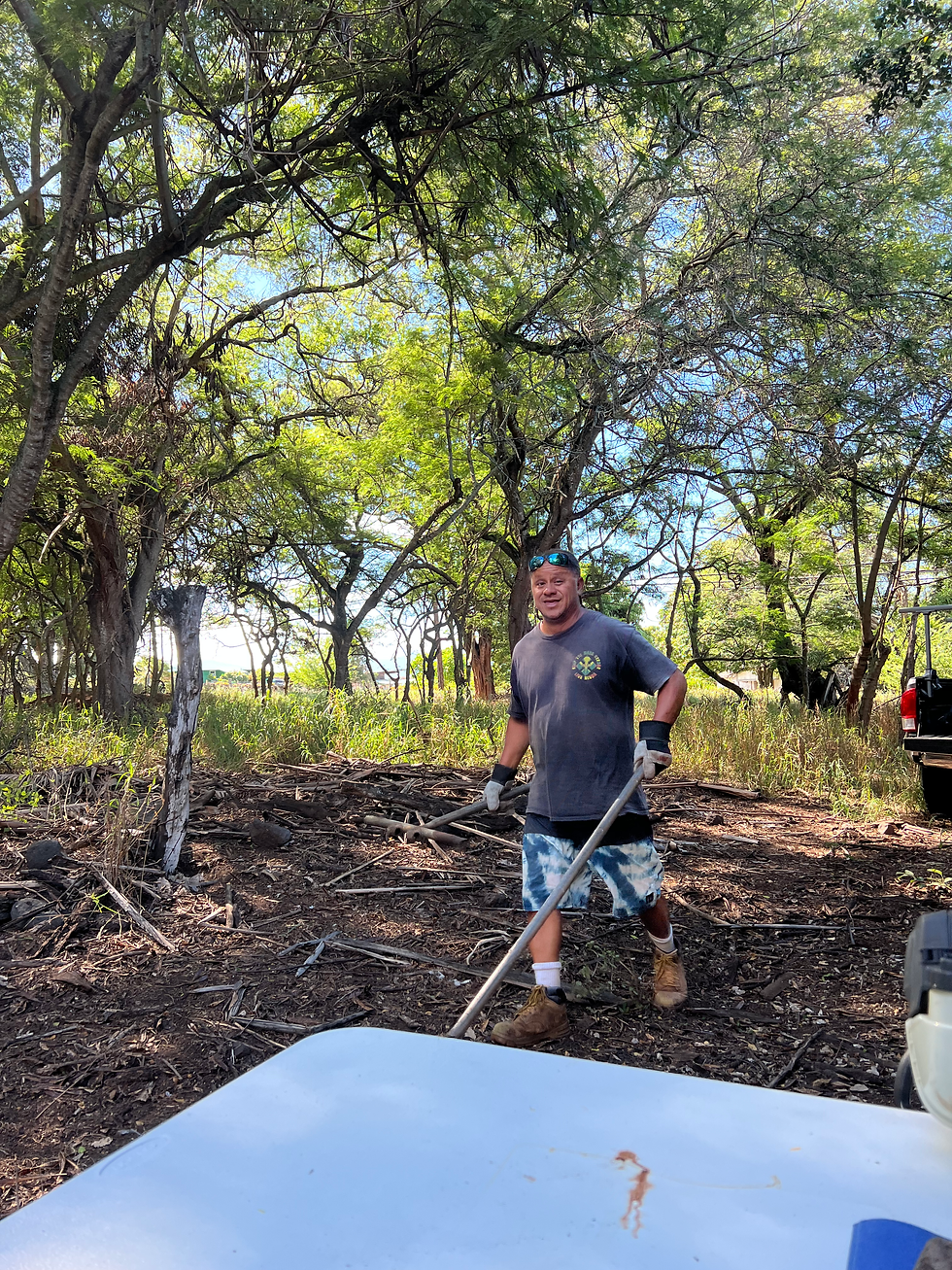
Ualapuʻe: Piko of Hawaiʻi and the Healing of Land
- Koko Johnson
- Jul 24
- 2 min read
In Hawaiian thought, piko means more than a center point. It is the navel, the origin—the sacred connection between past and future, ancestors and descendants, land and people. While every person carries a piko, so too does the land. And for many who walk in deep relationship with Molokaʻi, the quiet region of Ualapuʻe is felt as a piko of Hawaiʻi itself.
Nestled on the southeastern coast of Molokaʻi, Ualapuʻe is not a tourist destination or bustling town, but a sacred place rooted in stillness and history. Its coastline, forests, and people hold generations of wisdom, traditional practice, and aloha ʻāina. Here, knowledge is passed not just through language, but through wind, water, and living connection.
The late cultural historian and kumu hula John Kaʻimikaua spoke of Ka Piko o Molokaʻi—a sacred network of sites across east Molokaʻi, with Ualapuʻe at its center. In chants like “Kui Molokaʻi” and “Pākui,” this area is honored not only for its physical beauty but for its spiritual gravity. These ancient words remind us: healing begins in the piko.
As we face the complex challenges of our time—climate change, displacement, cultural loss—places like Ualapuʻe remind us where to turn. Restoration here is not just ecological, but deeply spiritual and communal. When we care for native plants, restore fishponds, or gather to resolve conflicts, we are engaging in healing work that ripples outward.
Now, a new vision is forming among Molokaʻi community members: to build partnerships rooted in respect, sustainability, and shared kuleana. What if we brought together landowners, cultural practitioners, and local families to create spaces for community gathering, education, and resilience? What if Ualapuʻe became a model for regenerative living—where small homes are built with the land, not on it, and where cultural and ecological restoration go hand in hand?
If Ualapuʻe is a piko, then it is not ours to control—it is ours to listen to. And perhaps that is the invitation we are being given: to return to the piko, to remember who we are, and to help the land—and ourselves.
.png)





Comments